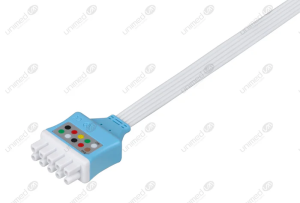Improvements in diagnostic technology have made a major contribution to better patient care in the constantly changing field of healthcare. One such innovation is lead wire ECG (Electrocardiogram), a diagnostic tool that plays a pivotal role in cardiac diagnostics. In this article, we explore the benefits and applications of lead wire ECG, shedding light on how it enhances the accuracy of cardiac diagnostics and improves patient outcomes.

Unimed Lead Wire ECG: Unveiling Unmatched Accuracy
Unimed, a leading provider of medical devices, offers state-of-the-art lead wire ECG systems designed to deliver unparalleled accuracy in cardiac diagnostics. With their advanced electrode placement and signal transmission technology, Unimed’s lead wire ECG systems ensure precise capturing and analysis of the heart’s electrical signals, enabling healthcare professionals to make informed decisions regarding patient care.
Optimizing Patient Care with Lead Wire ECG
The integration of lead wire ECG into cardiac diagnostics brings numerous benefits to patient care. By accurately assessing the heart’s electrical activity, lead wire ECG helps healthcare professionals identify underlying cardiac conditions promptly. This early detection facilitates timely interventions, leading to better management of heart conditions, enhanced treatment outcomes, and improved patient quality of life.
Conclusion:
Lead wire ECG, exemplified by Unimed’s cutting-edge technology, revolutionizes cardiac diagnostics and significantly contributes to improved patient care. By providing accurate and reliable information about the heart’s electrical activity, lead wire ECG empowers healthcare professionals to make informed decisions, leading to timely interventions and enhanced treatment outcomes. With lead wire ECG as an integral part of cardiac diagnostics, healthcare providers can strive towards providing the highest standard of care to their patients.



